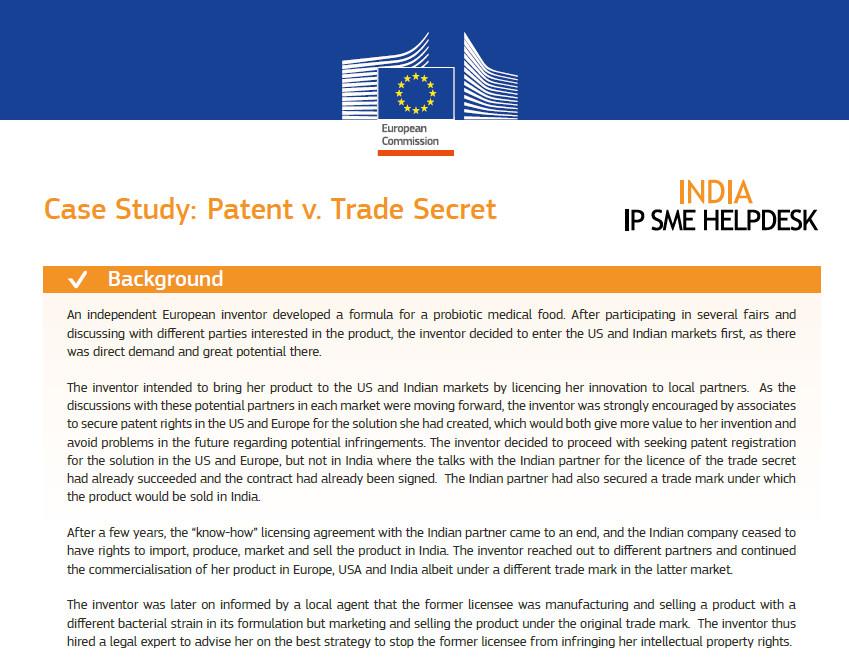
In this new case study recently published by the India IP SME Heldpesk, the team traces the story of a European inventor, who developed a formula for a probiotic medical food and brought this to the US and Indian market.
As for the IP strategy, the inventor decided to proceed with seeking patent registration for the solution in the US and Europe, but not in India where the talks with the Indian partner for the licence of the trade secret had already succeeded and the contract had already been signed. The Indian partner had also secured a trade mark under which the product would be sold in India. After a few years,however, the “know-how” licensing agreement with the Indian partner came to an end, and the Indian company ceased to have rights to import, produce, market and sell the product in India. The inventor reached out to different partners and continued the commercialisation of her product in Europe, USA and India albeit under a different trade mark in the latter market. The inventor was later on informed by a local agent that the former licensee was manufacturing and selling a product with a different bacterial strain in its formulation but marketing and selling the product under the original trade mark.
The case study demonstrates the actions taken by the inventor to respond to the IP infringement, explains the outcomes and provides key lessons learned. In sum, it gives an overview of the different questions to consider when deciding in favour of expensive patent protection, or cheaper - but riskier - trade secret protection.
Sources
Details
- Publication date
- 11 May 2022
